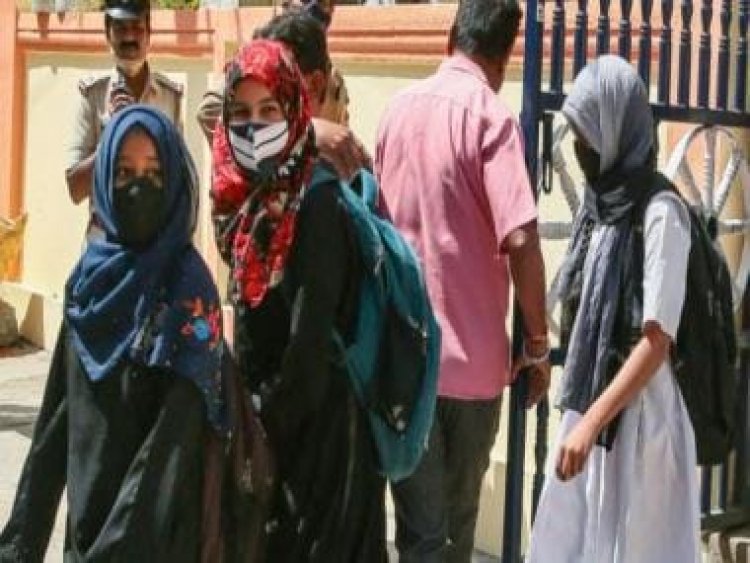Karnataka hijab ban: 'Divergence of opinion' between SC judges that led to split verdict
Karnataka hijab ban: 'Divergence of opinion' between SC judges that led to split verdict

New Delhi: “Divergence of opinion” led to a split verdict by the Supreme Court in the Karnataka hijab ban row. A two-judge bench headed by Justice Hemant Gupta and constituting Justice Sudhanshu Dhulia has now referred to Chief Justice of India (CJI) UU Lalit to constitute a fresh and larger bench to hear the petitions.
All eyes were on the much-awaited Karnataka hijab ban verdict today, In the courtroom, Justice Hemant Gupta dismissed the appeals challenging the Karnataka High Court order, while Justice Sudhanshu Dhulia allowed them.
For the unversed, the Karnataka High Court, on 15 March, dismissed a batch of petitions filed by a section of Muslim students of the Government Pre-University Girls College in Karnataka’s Udupi seeking permission to wear the hijab inside classrooms, ruling it is not a part of the essential religious practice in Islamic faith.
Karnataka hijab ban verdict: Justice Hemant Gupta vs Justice Sudhanshu Dhulia, what the two judges said?
Justice Gupta dismissed the 26 appeals filed against the Karnataka High Court verdict which held that hijab was not an essential practice of Islam and allowed the ban on wearing headscarf in schools, colleges in the state. He said that he has framed 11 questions and have answered them all against the appeals.
Don’t Miss: Karnataka Hijab ban: Supreme Court delivers split verdict, case now before CJI
Justice Dhulia, however, expressed the divergence in Justice Gupta’s opinion and set aside the high court’s order. “I have a different view and I am allowing the appeal. The main thrust should have been a matter of choice. It is ultimately, a matter of choice, nothing more, nothing else,” he said, adding that the entire concept of essential religious practice was not essential to the dispute.
Justice Dhulia said “The (Karnataka) High Court took a wrong path. It is ultimately a matter of choice and Article 19(1)(a) and 25(1). It is a matter of choice, nothing more and nothing less.”
Topmost for me was education of girl child: Justice Dhulia
“Are we making her life any better? That was a question in my mind… I have quashed the Government Order of 5 February and have ordered the removal of the restrictions… I have held that the judgment in Bijoe Emmanuel squarely covers the issue,” said Justice Dhulia.
“I have also held the ratio laid down by the Supreme Court in the case of Bijoe Emmanuel squarely covers the issue. The thing which was uppermost in mind was the education of girl child. It is a common knowledge that a girl child primarily in rural and semi-rural areas has a lot of difficulties, they have to do daily chores before she goes to school. There are other difficulties as well,” Justice Dhulia added.
Must Read: First India, now Supreme Court divided over hijab as two-judge bench gives split verdict
In February, students in Karnataka were banned from wearing hijab in classrooms. The petitioners moved the Supreme Court after the high court upheld the ban on 15 March.
Karnataka government hints at role of PFI in hijab row
The Karnataka government during the hearing in September told the top court that Popular Front of India — now banned in India — hatched the conspiracy and the Muslim students who protested the ban started acting on PFI’s instruction.
Karnataka Advocate General Prabhuling Navadgi hinted at the role of organisations like PFI saying that “there were some groups which were actively associated…”
“I don’t want to import personal knowledge but as a citizen I was a witness. It wasn’t case of single student but it was a group of students banging the gate of school vociferously. It was a ripple effect. It was in Udupi and then in Kundapura. We had children not attending classes… the ground reality was something else. It has never happened in Karnataka. There were some groups which actively associated themselves. Thus, the action of state must also be looked from this angle,” said Navadgi.
Karnataka hijab row: When and how it started?
On 1 January, six girls in Karnataka said that they were denied from entering their classroom wearing the hijab at Government PU College in Udupi. They then sat in protest outside the college and later held a press conference saying that permission was sought but college authorities refused to let them enter the classroom with their faces covered with headscarf.
They then began agitating against college authorities which in no time snowballed into a state-wide issue. Similar protests were reported from other towns in Karnataka.
Members of right-wing organisations, in retaliation, started wearing saffron shawls and protested against Muslim women students. A similar situation was reported at Bhandarkar’s college where girls took out a march wearing saffron shawl during a protest against Hijab.
With inputs from agencies
Read all the Latest News, Trending News, Cricket News, Bollywood News,
India News and Entertainment News here. Follow us on Facebook, Twitter and Instagram.
What's Your Reaction?



























































